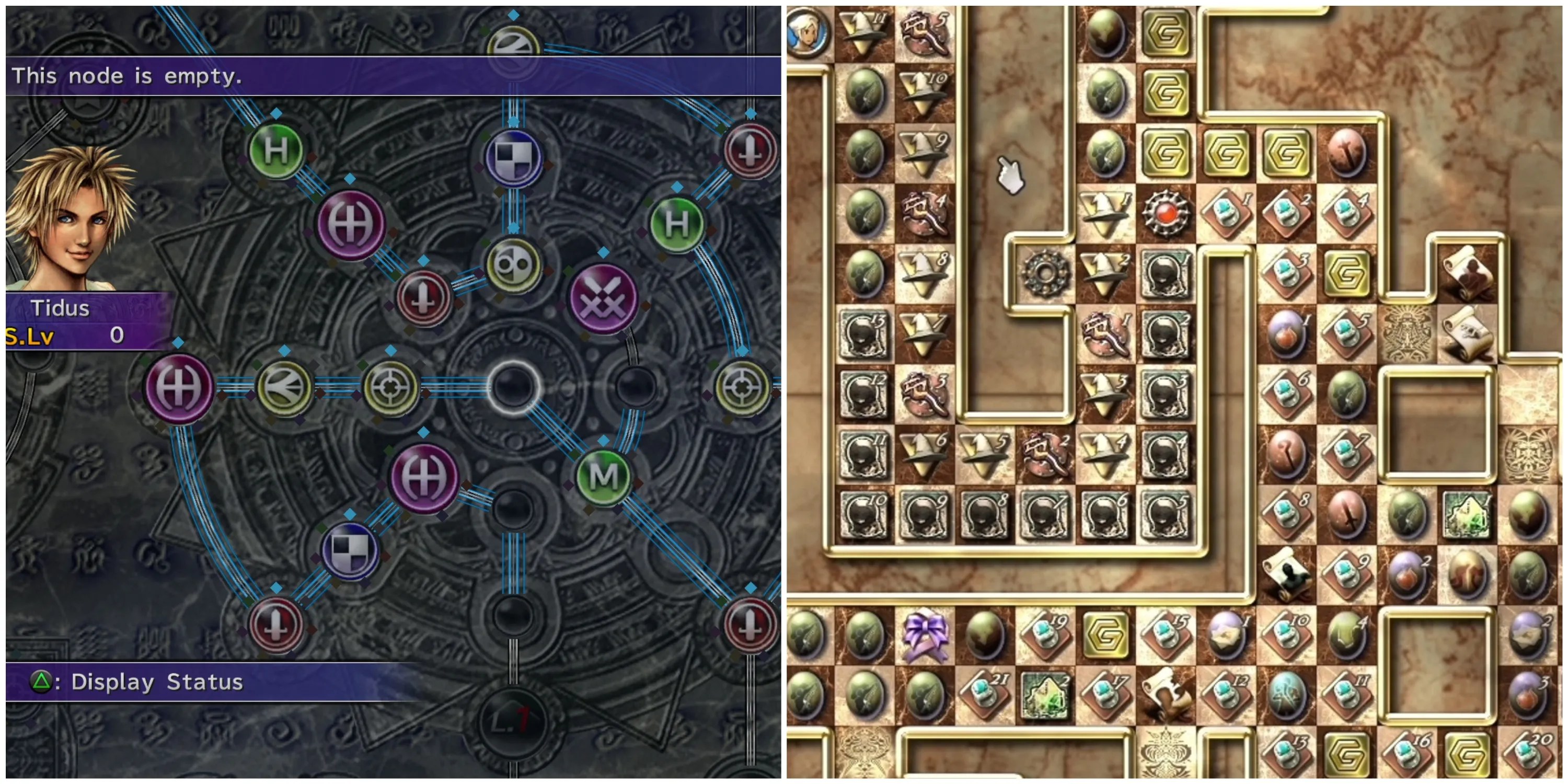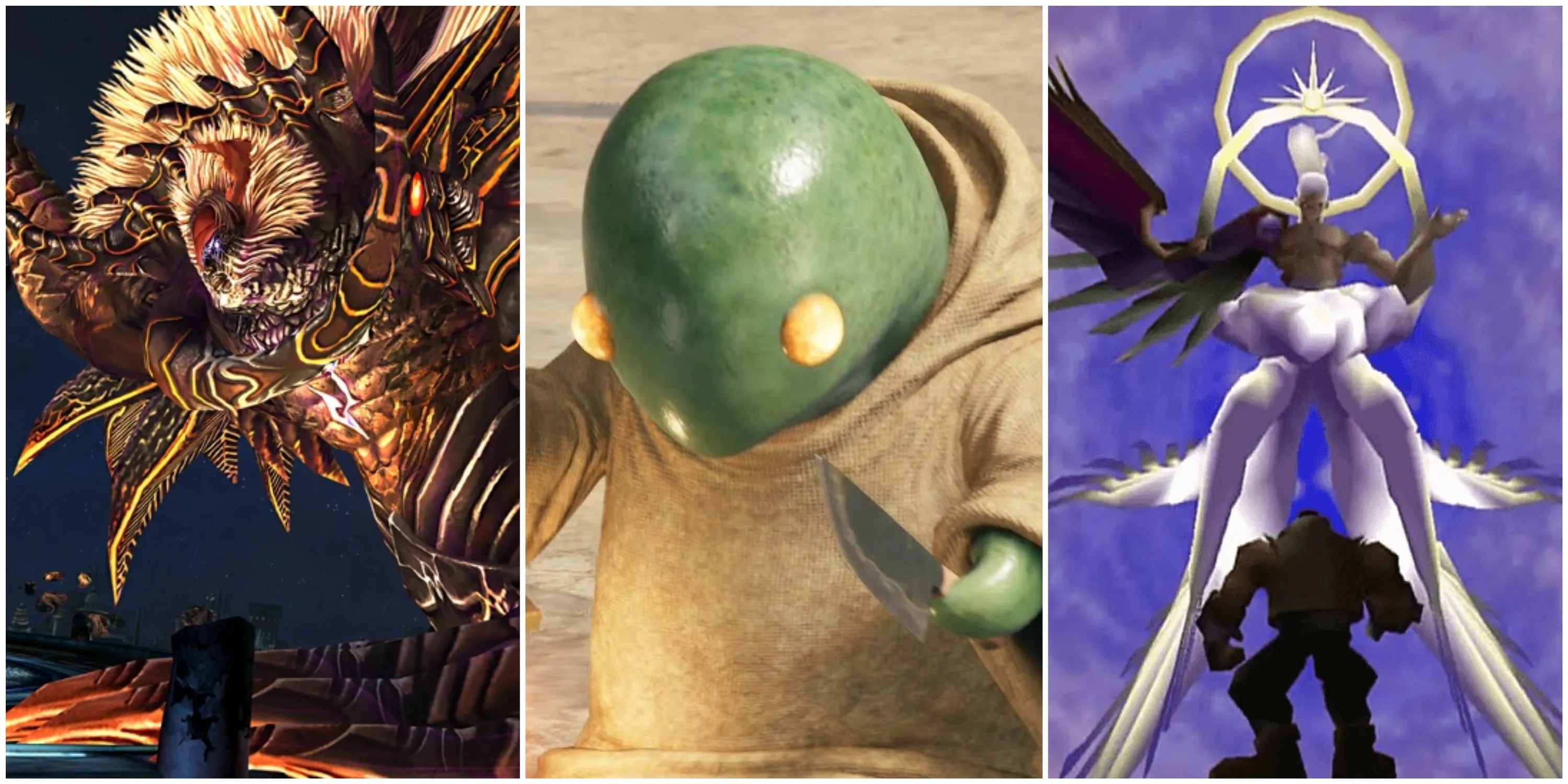Final Fantasyis one of the great JRPG franchises. It has it all: engaging gameplay, emotional stories, and unforgettable worlds. These strengths and more have helped theSquare Enixseries endure for decades and kept players coming back for more. However, greatness comes with a few caveats.
RELATED:Best Video Games That Defined Generation X
Over the years, several irritating tropes have popped up inFinal Fantasy. Sometimes, these result from chasing a trend. More often than not, though, they come from Square Enix’s own prerogative. Such misguided creative decisions and clichés diminish the experience. Not only do they alienate old fans, but they drive potential new ones away. They makeFinal Fantasyless of an icon and more of a punchline.
5Changing Gameplay
For whatever reason, Square Enix can’t leave a good thing going. All mainlineFinal Fantasytitles use turn-based combat and Japanese role-playing as foundations. These just aren’t enough, though, so each entry shifts the status quo in small yet significant ways.
More often than not,the developers add a gimmick or condition to baseline gameplay. InFinal Fantasy 7, many moves hinge on whatever materia are equipped to weapons and armor. InFinal Fantasy 8, characters can’t use magic unless they draw it from enemies. InFinal Fantasy 12, players dictate the party’s moves beforehand via the Gambit System, which is basically an Excel spreadsheet with different commands for every situation. InFinal Fantasy 13, fans only control one party member during battle, switching Paradigms and hoping their allies cast the right spells.World of Final Fantasyties abilities into capturing and raisingPokemon-esque monsters, which stack on top of the heroes during combat. The list goes on.

While not all of these are inherently bad, each one has its own learning curve. It forces fans to throw out everything they know about the established gameplay in favor of something new. At that point, they probably pine for the series' longtime rival,Dragon Quest, which keeps things simple and consistent. If it ain’t broke, don’t fix it.
4Bubbly Sidekicks
AsFinal Fantasyhas gone on, its anime trappings have become more apparent. This has affected the characterization in key areas. Most noticeable is the addition of ditzy, overly-cheerful goofballs. These guys join the party and serve as comic relief. Sadly, they’re not always good at it.
RELATED:Final Fantasy: The Funniest Characters In The Franchise
The excited sidekicks have a mixed track record. Some figures, likeYuffie, have become beloved faces of the franchises. However, far more cross the threshold into grating territory. Look at Zell fromFinal Fantasy 8, Rikku fromFinal Fantasy 10, and Vanille fromFinal Fantasy 13. They endlessly exaggerate their body movements and have vapid, childish dialogue. Rather than relieve the tension, they kill whatever mood the story is going for. As a result, players may swap them out of the party through sheer contempt.
3Preachy Villains
Here’s another unwelcome anime trope. MostFinal Fantasyvillains don’t want to rule the world. Instead,they want to destroy it. What’s more, is that they’re happy to explain that goal to anyone who’ll listen.
These antagonists often go on long-winded tangents about how they came to their genocidal solutions. It’s as if they’re auditioning for Shakespearean theatre without the writing prowess. Their speeches mainly consist of vacant platitudes about human suffering. To ease that suffering (or to simply exterminate all unworthy life forms), they’ll wipe out the whole planet. The Emperor ofFF2, Seymour ofFF10, Barthandolus ofFF13, Caius ofFF13-2, and Genesis ofCrisis Coreeach present some variation of this formula. By this point, said formula has gotten stale, predictable, and boring.

That said, there are instances where this type of villain works. Kefka fromFF6, Sephiroth fromFF7, and Kuja fromFF9are somewhat more engaging than their peers.Their apocalyptic goals stem from personal revenge and/or damaged psyches, so they resonate with players to an extent. Unfortunately, such positive examples are few and far between.
2Convoluted Growth
Leveling up is a natural part of RPGs. As the heroes gain experience, they grow stronger through various stats. They also gain new moves and equipment. The process is addictive and easy to grasp, so why does Square Enix insist on overcomplicating it?
Like combat, the developers needlessly tweak the progression system with each entry.The results are some truly bizarre methods of character growth.FF10’s Sphere Grid forces fans to connect the dots in a mess of circles. Each dot represents an ability, attribute, or stat boost. To fill these in, players must collect specialized spheres. A worse version of this pops up inFF13’s Crystarium: which retains all the irritation while removing any customization.

RELATED:JRPGs With The Deepest Lore, Ranked
The License Board inFF12has that covered while sporting a host of new problems. The game boasts a varied job system, and those jobs all come with unique boards. Players gain License Points by leveling up, and spending those points to unlock squares on the board. These encompass not only abilities and stats but also the weapons and armor that characters can use. Sadly, the personalization dissipates once players fill in all the squares. Moreover, it feeds into the common issue.
These systems bog players down in micromanagement. They sometimes encourage choice in progression, but they usually opt for the linear path. Because of that, the games feel convoluted for no reason and exist only to waste players' time.

1Unfair Bosses
As heroes get stronger, they tackle tougher villains.That’s why enemies and bosses are more powerful later in the adventure. They boast greater health and more damaging attacks. Overcoming these increased challenges cements fans' sense of accomplishment. It’s one of the benefits of escalation, but Square throws a wrench in that process.
To further expand the difficulty,many late-gameFinal Fantasybosses resort to cheap tactics. They often use attacks that instantly wipe out the whole party.FF7and its remake both include such moves. At other points, bosses might throw in some special condition or puzzle element involving rare status effects like Doom and Zombie. They can easily pull these tricks off since they get more than one turn. The worst offender isFF10with its multiple Seymour fights, the Zombie-ridden bout with Yunalesca, and the final battle against Jecht/Sin and its lightning towers.

Certain entries let fans counter these conditions. TheFF9heroes, for example, can learn resistances to several status ailments. In addition,FF12players can program their party to eliminate those ailments and heal each other. For other games, though, the combatants face an uphill battle with insurmountable frustration. In short, the fights are harder for the wrong reasons. When players lose, they feel robbed. When they finally win, they see it as a fluke. That’s not an impression one should get with such climactic moments.